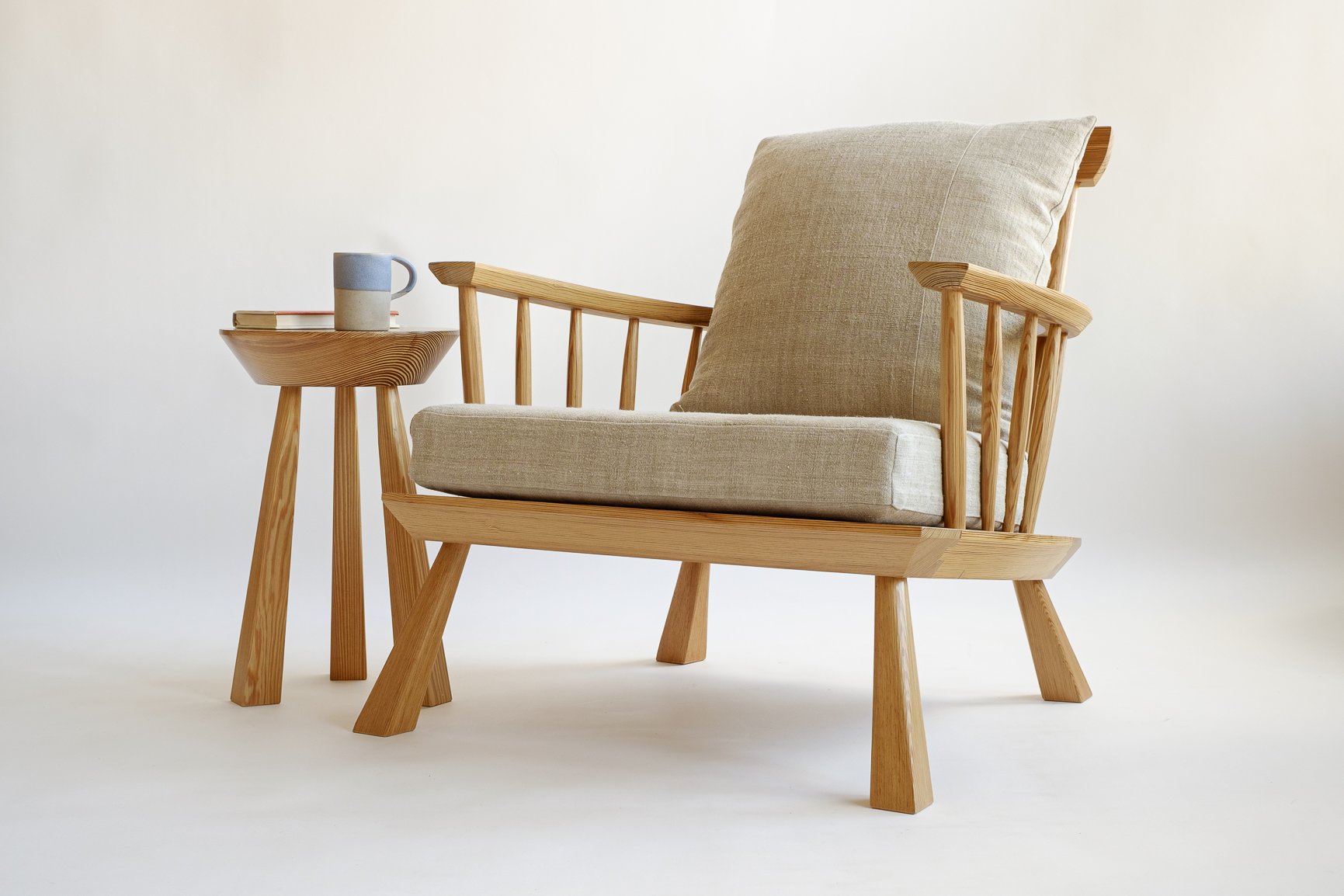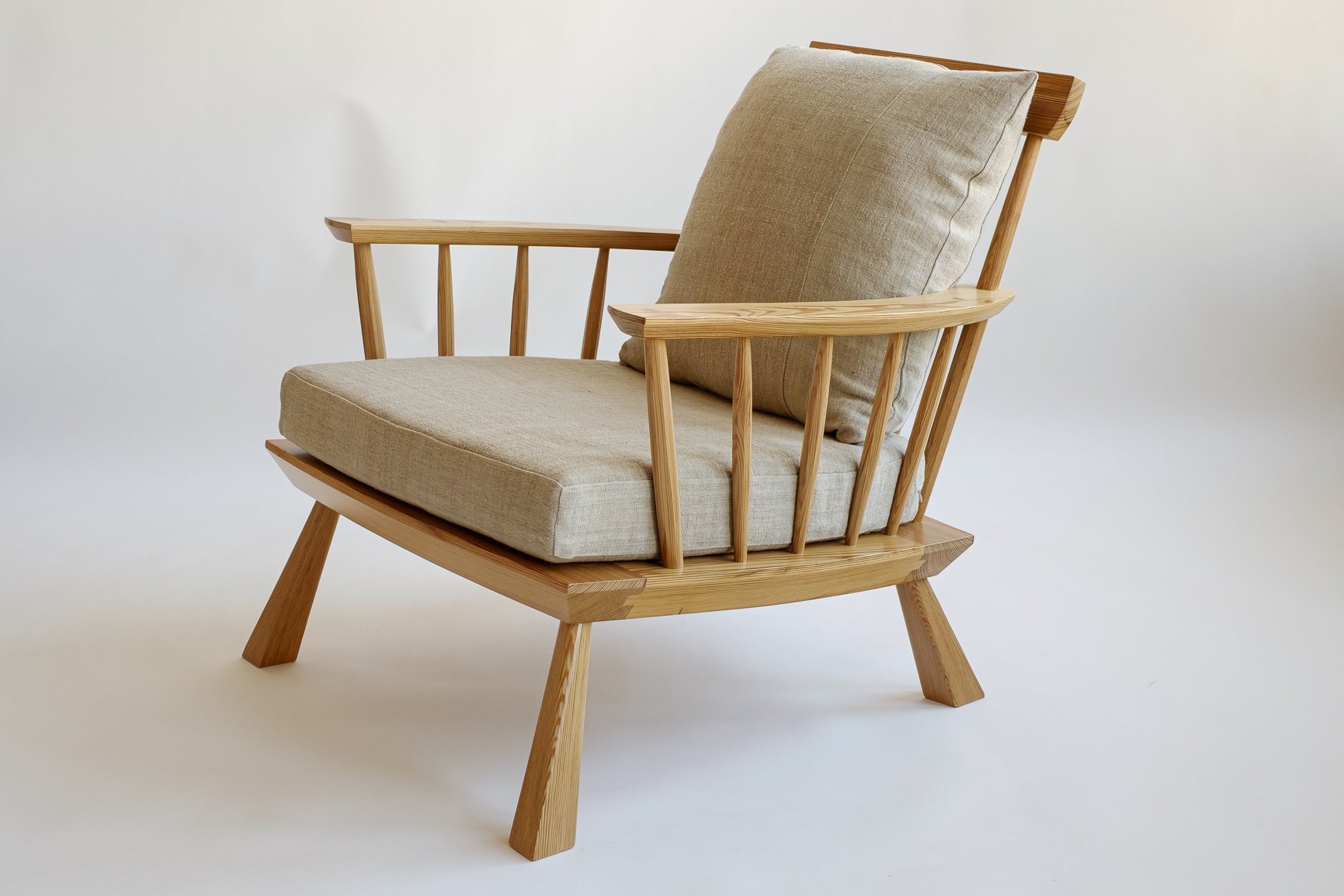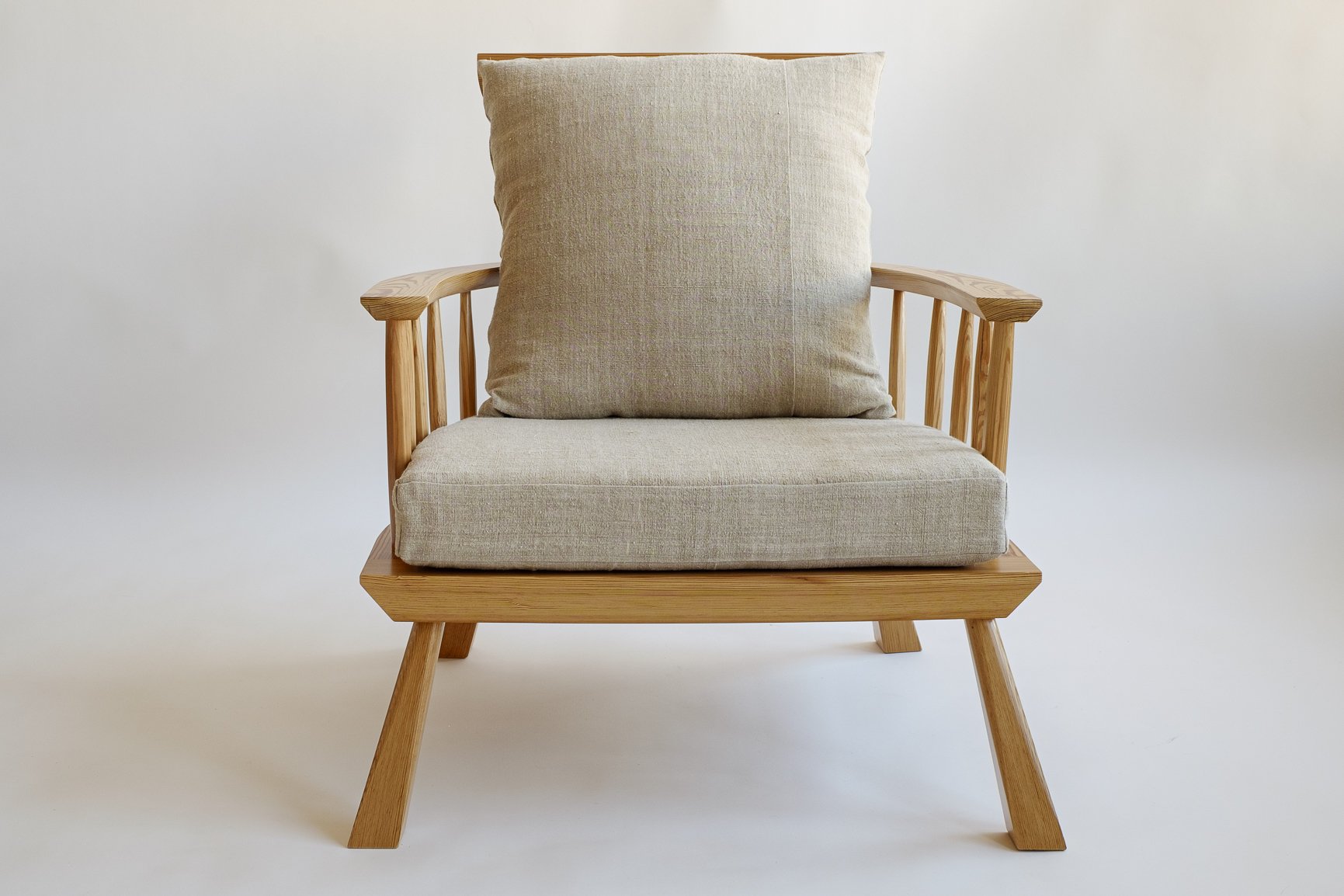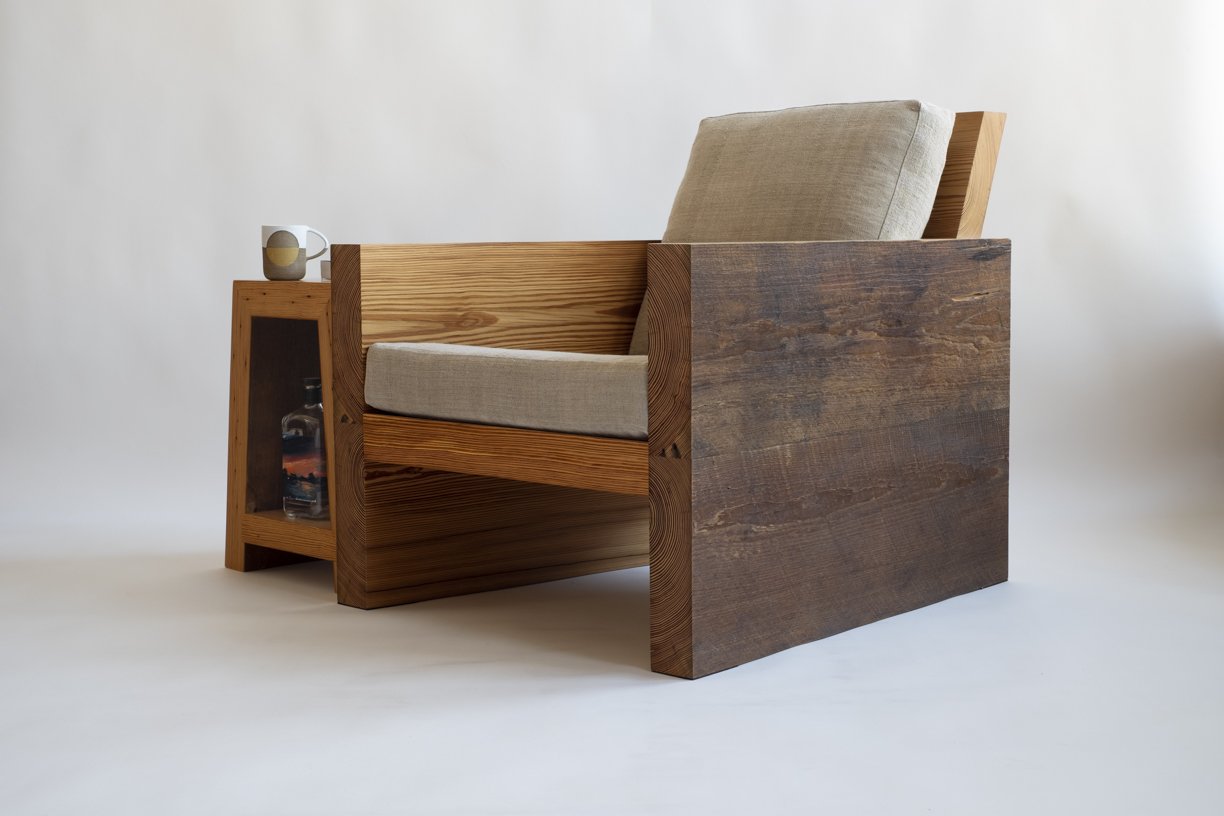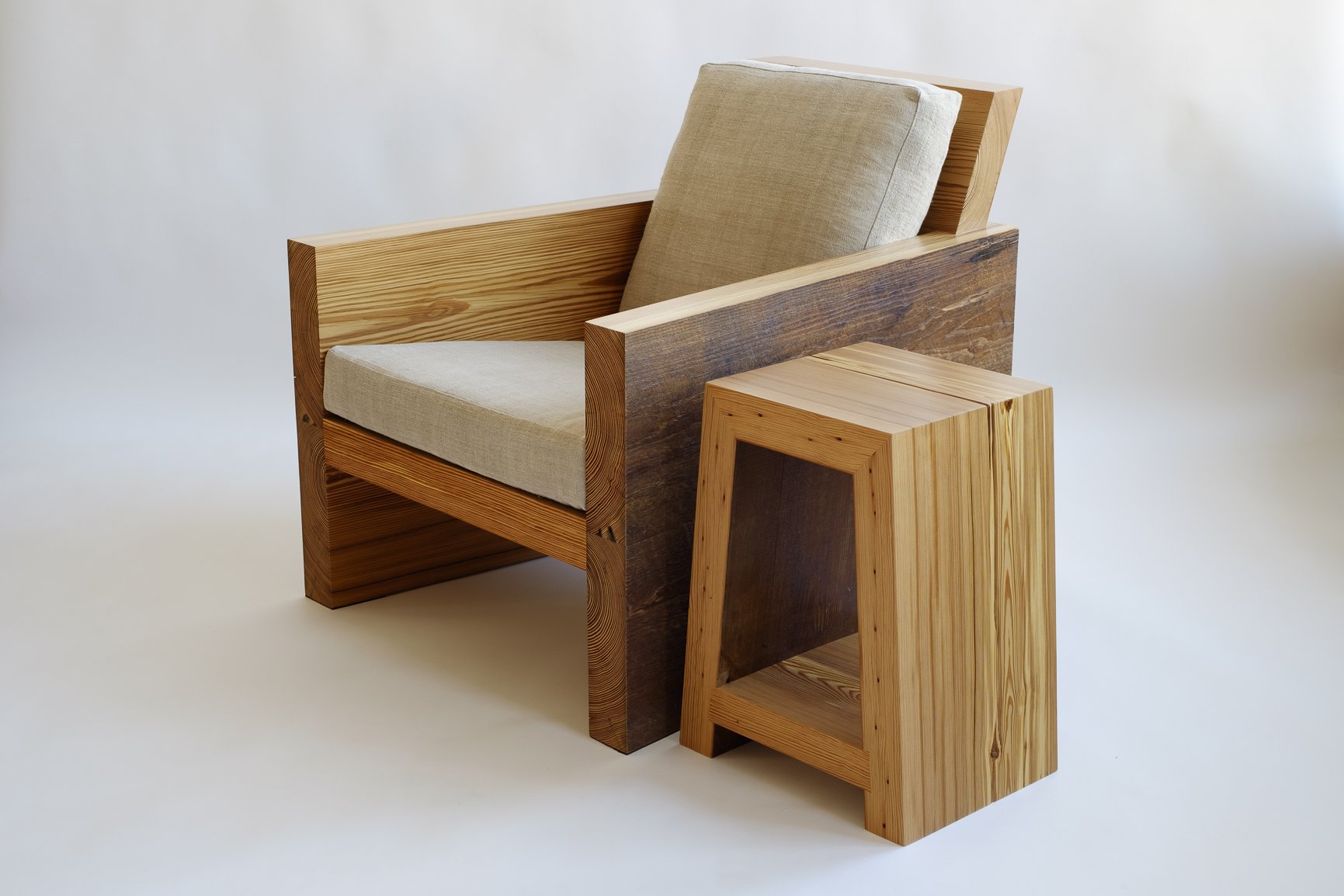Reclaimed douglas fir, antique handwoven hemp upholstery, 30”W x 32”H x 36”D
This piece is inspired by traditional Welsh Stick Chairs, (a precursor to the more widely known Windsor Chair), as well as mid-century sofas. The staked legs, arms, and back are hand shaped and joined with wedged, tapered tenons, which are unrivaled in their strength and longevity. The seating geometry of this chair is the same as the Slab Chair. Shown with matching side table.
Slab Club Chair
Slab Club Chair, reclaimed douglas fir, antique handwoven hemp upholstery, 30”W x 32”H x 36”D
This piece is an intentional blending of intensely minimalist design, rough and massive reclaimed lumber, and a seating geometry that is inviting, and comfortable. It is made from only 4 pieces of wood and employs loose cushion upholstery and pirelli webbing for utmost comfort and simplicity. Shown with matching side table.
Staked Sofa
This wood framed sofa has design influence from mid century designs, as well as more primitive Welsh stick chairs. The legs and sticks are hand shaped, tapering octagons. They are staked and wedged through the seat frame and arms. Pirelli webbing adds just the right amount of decadence to the seat cushion.
Shown in white oak with natural canvas upholstery
Trestle Table
I’ve been lucky to make a lot of tables in my career, and the simple trestle design has long been my favorite. The elegant simplicity of trestles sit perfectly in many different interiors. This design incorporates a beam that is through-tenoned into the trestle ends. The beam is locked in place with tapered wooden wedges, so the entire table can easily be disassembled.
Shown in solid walnut
Pedestal Table
This pedestal table is supported by an elegantly clean concave center column and a clean X base. The column is shaped entirely by hand, not turned on a lathe. The table top shown is made from a 2” thick solid slab of walnut, with a knife edge to lighten it visually. This design can be easily scaled up for larger dining tables.
Shown in walnut. 40” diameter x 29” high
JS06 Chair
This chair is the sixth iteration of a chair I’ve been making and evolving for most of my career. Every chair I’ve made (including the Staked Chair) come from a set of lines and proportions that can be seen in the very first chair I designed. A few years ago I repaired an antique chair a seat and back woven with danish papercord. I couldn’t find a tutorial or a book that showed the exact weaving pattern that was used, so I studied the antique piece and taught myself how to weave it. It’s a little more complicated and time consuming than more common seat weaving techniques, but I think it’s a little more elegant looking from underneath.
This chair is shown in walnut with natural danish papercord seat
Staked Chair
This side chair is my physical sketch of a chair, using as few lines as possible. The legs and sticks are hand shaped tapering octagons. I sometimes make the legs square at the bottom and taper to round as they meet the bottom of the seat. They are staked through the seat and wedged. The geometry is designed to be comfortable and strong. Shown here in white oak
Footstools
Stools and benches are examples of elemental furniture design. They’ve been built and used as long as furniture has been made. They’re incredibly useful to have around. I’ve loved small footstools my whole life. I trace a line all the way back to a little red stool my brothers and I stood on to reach the sink as we brushed our teeth each day.
These footstools are the most minimalist design I’ve done. A single slab with a hand slot and four hand-shaped legs staked through and wedged. They’re strong, light, and easy to carry around the house. Every home ought to have at least one good footstool.

